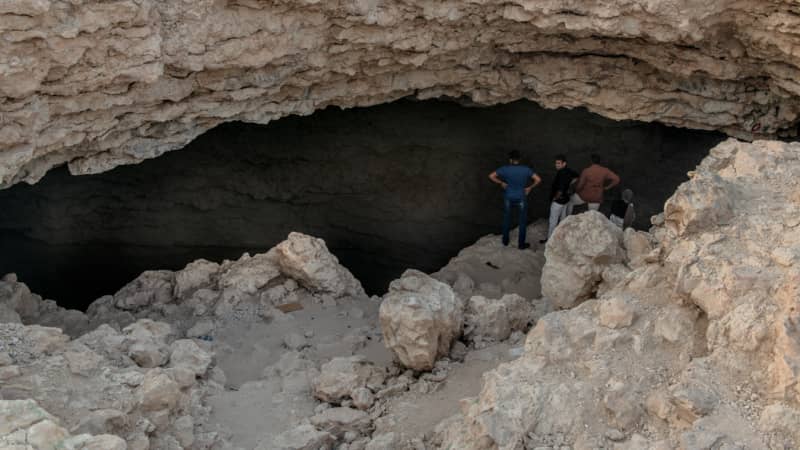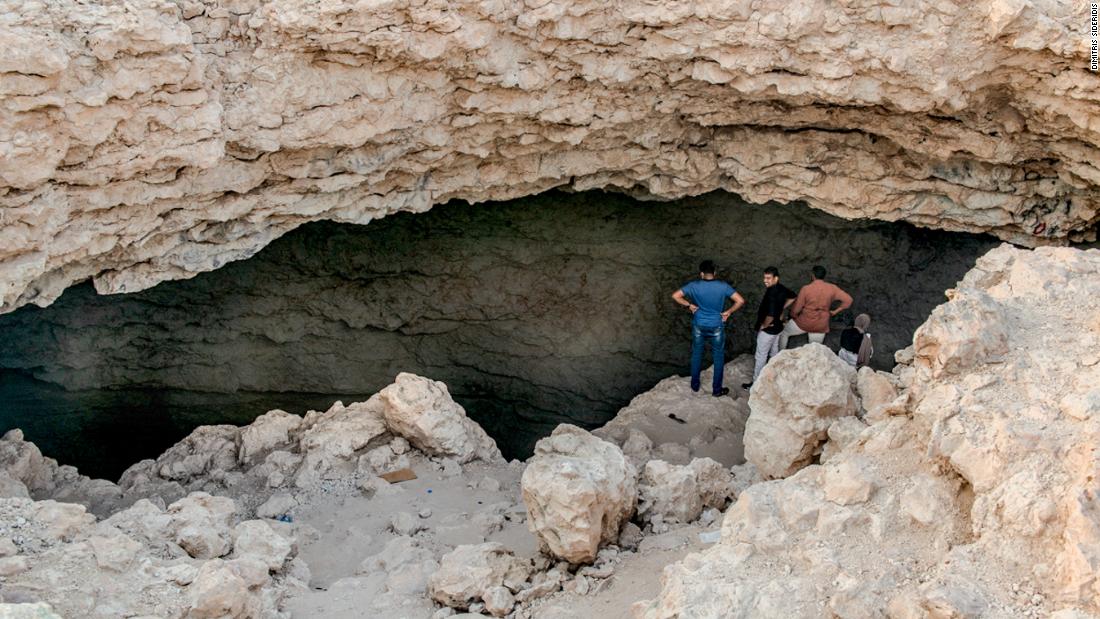(CNN) — Right in the middle of the Qatari peninsula, a large chasm suddenly yawns open from the rocky desert, plummeting some 100 meters down into the earth.
It’s an impressive sight — whether you’re standing at the top or the bottom.
This is Musfur, a massive ancient cavern believed to be the deepest accessible sinkhole to have been discovered in Qatar.
The site is situated less than an hour’s drive west of Doha, right off the main Salwa Road, making it an ideal destination for a quick and easy outing for anyone up for some underground exploration.

The Musfur sinkhole is said to be a glimpse back into the region’s geological formation.
Dimitris Sideridis
The entrance to Musfur is enclosed by a fence for protection. Reaching the sandy depths of the sinkhole is relatively easy, but visitors should be vigilant as they scramble down the steep and rugged passage. Hiking boots are a must but be extra careful not to step on the insects crawling through the rocks.
The light from the entrance gradually dwindles as you descend toward the bottom, while a pleasant breeze flows through the limestone and gypsum layers.
While plant life is largely absent, you’ll come across small birds that have built their nests high on rock crevices.
Karst creations
Sinkholes are a typical feature of karst topography.
This distinctive environment is the product of slightly acidic water acting on soluble bedrock such as limestone. As the water infiltrates the rock, it gradually weathers, forming openings. As time passes, these cavities get filled with sand and soil. When they become large enough and the arch opening collapses, a sinkhole is formed.
Alongside sinkholes, karst landforms in Qatar include depressions, caves, solution hollows and rawdahs (gardens, meadows or fertile depressions in Arabic).
Snapshot of the past
Aspa D. Chatziefthimiou, a senior ecologist and talks coordinator at Qatar Natural History Group, who has visited Musfur several times over the past decade, said descending into the sinkhole opens a window to the very distant past.
“If you know how karst is formed, it’s like you’re going back in geological time; seeing in present time how the water was circulating and creating holes in the bedrock,” she told CNN.
“You’re getting a snapshot — and this happens [often] in Qatar, the trip back through geological time.”
To get to Musfur from Doha involves a drive south on Salwa Road until the exit at Mekaines. From there, it’s off-road so it is recommended to use a map app and an all-terrain vehicle, as the ride on the potholed road is bumpy. A headlamp and water are essential — as is, of course, taking any trash home.


